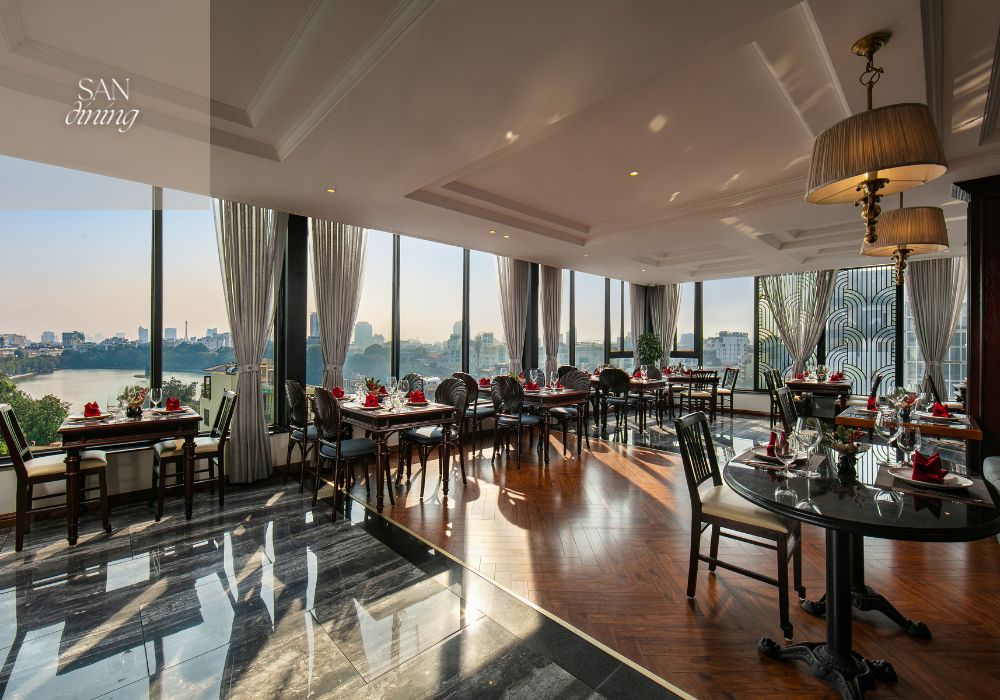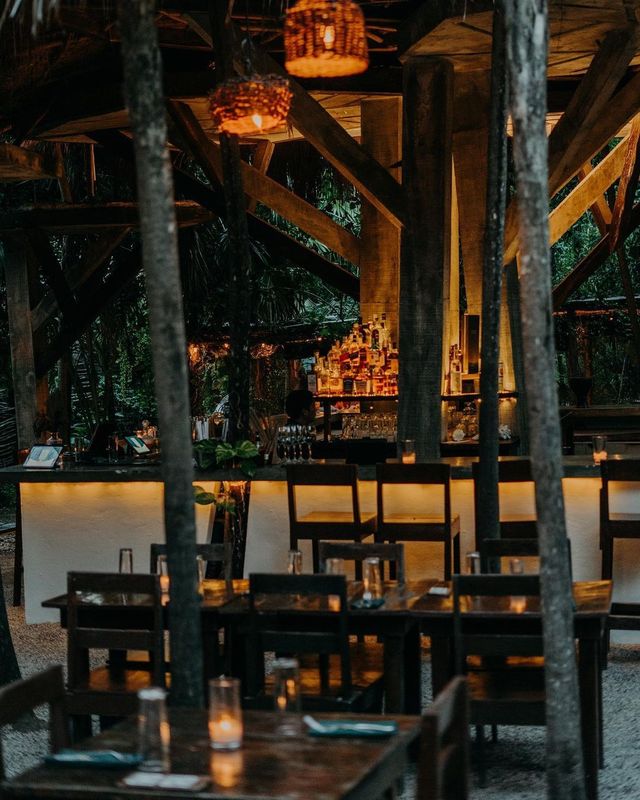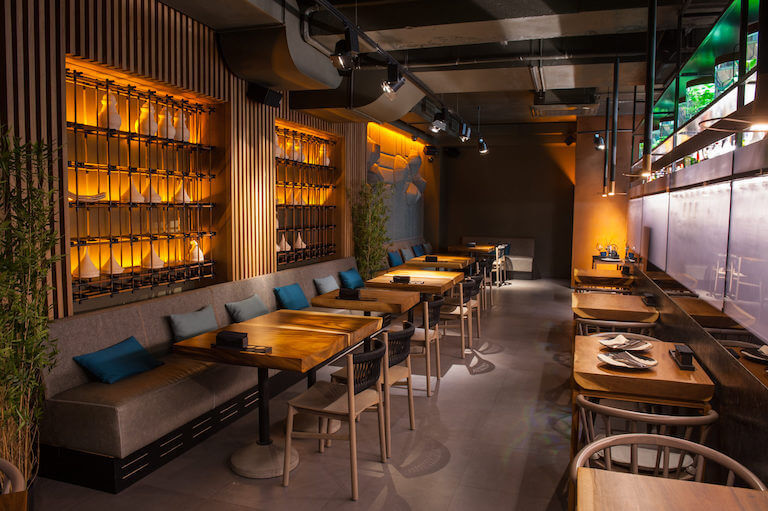Best Ambiance Restaurants Islamabad: Perfect Destinations for an Unforgettable Dish
Best Ambiance Restaurants Islamabad: Perfect Destinations for an Unforgettable Dish
Blog Article
Savor Genuine Asian Cuisine With a Pan-Asian Twist for a Cooking Experience
Beginning on a culinary journey with genuine Asian food, boosted with a Pan-Asian spin, offers an one-of-a-kind possibility to discover the abundant tapestry of flavors that define the area's varied cooking practices. As you consider these luring dishes, take into consideration the social narratives and historic influences that form them, each bite offering a story waiting to be uncovered. asian fusion restaurant.

Exploring Pan-Asian Flavors
In the realm of international gastronomy, Pan-Asian cuisine stands apart for its amazing variety and the unified interplay of tastes from numerous Oriental societies. This cooking strategy commemorates the one-of-a-kind active ingredients and rich customs discovered throughout the continent, creating a tapestry of tastes that is both intriguing and satisfying. Key to Pan-Asian cuisine is its ability to balance contrasting flavors-- pleasant, salted, spicy, and sour-- while highlighting the quality and high quality of each ingredient.
From the umami-rich soy sauce of Japan to the intense chili peppers of Thailand, Pan-Asian cuisine uses a comprehensive combination of flavors. These elements are often incorporated in creative ways, boosting dishes with layers of complexity. As an example, using aromatic herbs such as lemongrass and cilantro, usual in Vietnamese and Thai cuisine, adds a rejuvenating illumination to recipes, while the incorporation of coconut milk provides a creamy, rich texture.
The emphasis on fresh fruit and vegetables and aromatic seasonings makes certain that each dish is not just a feast for the taste but also for the detects. Pan-Asian food invites restaurants to embark on a cooking trip, checking out the substantial and varied landscapes of Asian gastronomy with every bite.
Fusion Dishes to Attempt
While Pan-Asian food is commemorated for its standard flavors, the modern cooking landscape is progressively accepting blend meals that mix these timeless components with impacts from other areas. This cutting-edge technique not only honors the abundant heritage of Eastern cookeries but likewise introduces unique taste experiences that appeal to modern tastes.
A prime example of such a combination dish is the Korean-Mexican taco, where seasoned bulgogi beef is covered in a warm tortilla, covered with kimchi and a spicy gochujang-infused salsa. This mix weds the bold, full-flavored tastes of Korea with the lively, fresh aspects of Mexican cuisine. Likewise, sushi burritos have gained popularity, amalgamating the delicate virtuosity of Japanese sushi with the passionate, hand-held comfort of a burrito, often featuring blend ingredients like tempura shrimp and avocado with a drizzle of wasabi mayo.
Another noteworthy recipe is Thai curry ramen, which infuses the velvety, fragrant flavors of Thai curry into the soothing broth of standard Japanese ramen, producing a harmonious mix that tantalizes the senses. These blend dishes prolong past simple novelty; they stand for a cooking dialogue in between cultures, motivating exploration and technology worldwide of Pan-Asian food.
Necessary Components and Spices
To genuinely value Pan-Asian cuisine, one should understand the important components and flavors that form its structure. This diverse cooking design attracts from a rich tapestry of Asian traditions, employing a harmonious mix of textures and tastes.
Fragrant elements are essential, with lemongrass, garlic, and ginger being common across numerous Pan-Asian recipes. These components provide a fragrant base that enhances the intricacy of tastes. Flavors such as star anise, cardamom, and cinnamon present heat and character, echoing impacts from regions like China and India.

Food Preparation Techniques and Tips
Mastering the art of Pan-Asian cuisine requires familiarity with its distinct food preparation techniques, each adding to the dynamic tapestry of tastes this cooking tradition is celebrated for. Central to these methods is the stir-fry, a quick cooking strategy that maintains the dietary stability and brilliant colors of components. Using a frying pan, the stir-fry method permits for also warm circulation, vital for attaining the characteristic structure and taste balance of Pan-Asian meals.
An this additional basic strategy is steaming, especially widespread in Chinese food. This gentle technique keeps the natural flavors and nutrients of active ingredients, making it optimal for fish and shellfish and veggies. Dumplings, a beloved staple, typically benefit from steaming, causing soft, succulent appearances.
Barbecuing, also important, gives smoky midsts to meals such as Oriental bulgogi or Japanese yakitori (best asian restaurant Islamabad). This strategy commonly entails marinating components, allowing tastes to pass through deeply prior to cooking over an open flame or hot plate
Last but not least, mastering the art of balancing tastes-- pleasant, sour, salted, bitter, and umami-- is vital. Appropriately layering these go to my blog elements can boost a dish from ordinary to amazing, using a facility and pleasing culinary experience that personifies the significance of Pan-Asian food.
Eating Experiences Worldwide
Across the globe, Pan-Asian cuisine uses an unequaled dining experience, commemorated for its abundant tapestry of flavors and vibrant discussions. This cooking phenomenon has gone beyond cultural boundaries, catching the hearts and tastes of food lovers worldwide. In multicultural cities fresh York, London, and Sydney, Pan-Asian restaurants act as melting pots where culinary customs from Thailand, Japan, China, and beyond assemble, offering diners with a diverse mix of recipes that highlight the area's variety.
The international allure of Pan-Asian food hinges on its ability to use both authenticity and technology. Cooks masterfully marry conventional components such as lemongrass, soy sauce, and miso with contemporary techniques, causing recipes that are both familiar and refreshingly new. This combination enables diners to start a cooking trip that values heritage while accepting modernity.
Additionally, dining experiences are elevated go to this site through thoughtfully made atmospheres that show the principles of Pan-Asian aesthetic appeals. From minimalist Japanese-inspired interiors to vivid Thai-themed spaces, each restaurant supplies an one-of-a-kind ambiance that complements the cooking offerings. Therefore, patrons are not just consuming a meal but partaking in a social experience, making Pan-Asian dining an absolutely worldwide phenomenon.
Verdict
The exploration of Pan-Asian food uses a profound understanding of the complex interplay of flavors and culinary traditions throughout Asia. By embracing combination dishes such as Thai curry ramen and sushi burritos, the culinary journey not just highlights the versatility of traditional ingredients yet likewise showcases ingenious contemporary methods. This gastronomic experience, enhanced by crucial seasonings and cooking techniques, gives a distinct chance to value the cultural variety and cooking creativity that define Pan-Asian cuisine on a global range.
Embarking on a cooking trip via authentic Eastern cuisine, improved with a Pan-Asian spin, offers an unique chance to discover the abundant tapestry of flavors that define the area's diverse cooking practices.In the realm of worldwide gastronomy, Pan-Asian cuisine stands out for its remarkable variety and the harmonious interaction of tastes from various Asian societies. Trick to Pan-Asian cuisine is its capability to balance contrasting tastes-- sweet, salty, spicy, and sour-- while highlighting the quality and quality of each active ingredient.

Report this page